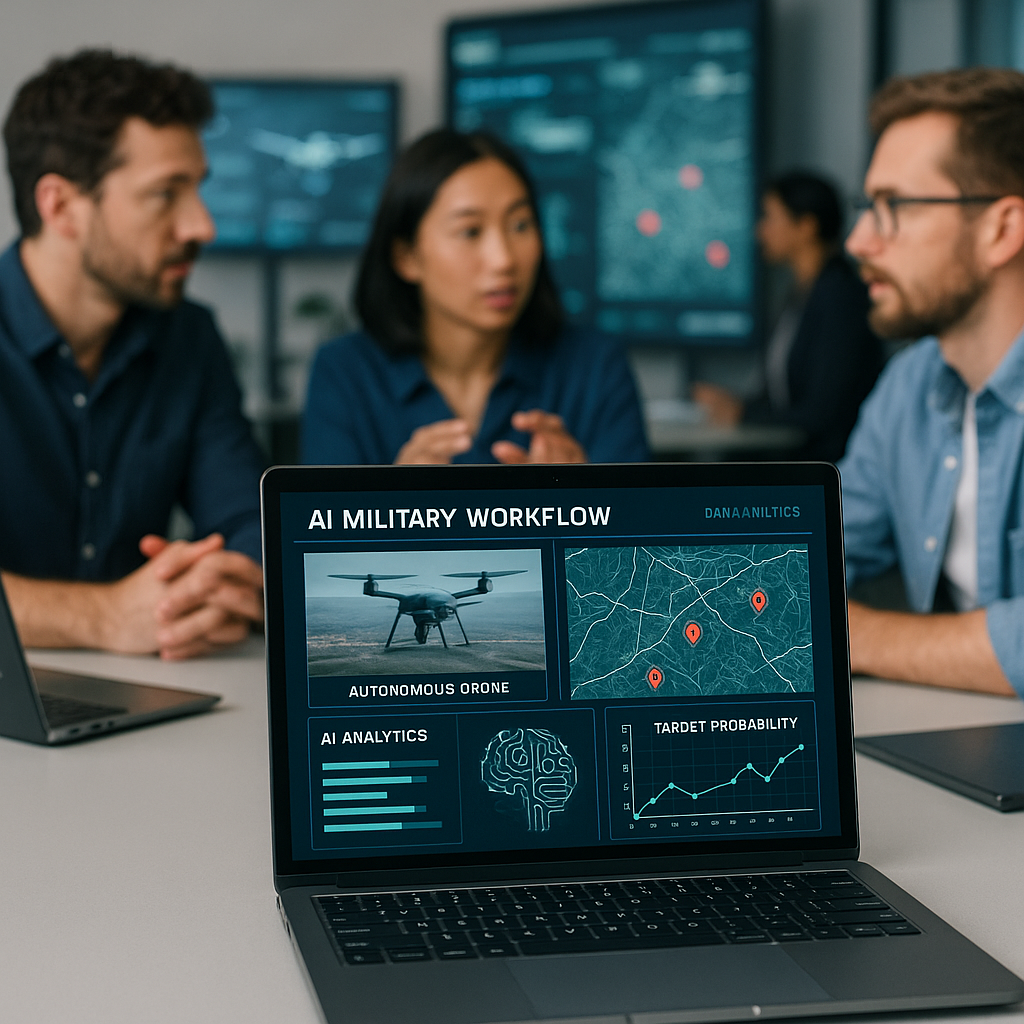# The US Government’s AI Funding: Implications for Military Applications
In a significant move, the US Chief Digital and Artificial Intelligence Office (CDAO) is distributing millions of dollars to leading AI companies to develop applications tailored for military use. Awards reaching up to $200 million are being allocated to frontrunners such as Anthropic, Google, OpenAI, and xAI. This financial backing represents an intentional pivot by the Department of Defense (DoD) to leverage advanced artificial intelligence for enhancing national security.
As a business decision-maker or entrepreneur, you might wonder how such developments impact the landscape of technology and its applications beyond the military sector. The funding initiatives outlined by the CDAO illustrate a broader trend: the increasing importance of AI in various fields, including those pertinent to civilian industries. Understanding these changes is crucial for comprehending the potential for innovation that lies ahead.
## Understanding Agentic AI Workflows
### What Are Agentic AI Workflows?
Agentic AI refers to systems that can operate independently to perform specific tasks, mimicking aspects of human reasoning and decision-making across various mission areas. By investing in these workflows, the CDAO aims to enhance operational efficiency and support military personnel effectively.
In a civilian context, we at [Best Choice](http://web.best-choice.dk) believe that these same AI workflows can transform the way businesses operate. For example, a café utilizing a custom-built chatbot can handle reservations and answer customer inquiries autonomously. This not only streamlines operations but also allows staff to focus on enhancing customer experiences.
### Extending the AI Frontier
The agencies’ emphasis on integrating advanced AI operations into military applications signifies a collective belief in the transformative nature of AI. As echoed by Dr. Doug Matty, the Chief Digital and AI Officer, the U.S. military anticipates that the technology will support warfighters and maintain strategic advantages. Businesses can draw parallels to ensure competitiveness in their respective markets.
Imagine a warehouse that implements automation through an AI-driven inventory management system. By predicting demand and optimizing stock levels, such a system can help reduce excess inventory and minimize waste—ultimately improving profitability.
## Partnering with Leading AI Companies
### Collaboration with Top-Tier Tech Firms
By partnering with companies like Anthropic and OpenAI, the government aims to usher in a new era of good Keplerian workflow. As this wave of innovation proliferates, businesses across Europe, especially in Denmark, can reap the rewards of well-established technologies. Companies can partner with us to build or integrate custom AI solutions that offer necessary features tailored to their operations, allowing them to achieve similar efficiencies as those anticipated in military applications.
### Real-World Examples of AI Implementation
For instance, consider an online store that leverages AI algorithms to analyze customer behavior and personalize marketing strategies. The result is a quantified increase in sales and improved customer retention rates. A robust customer relationship management (CRM) system helps automate outreach, applicable to B2B or B2C businesses alike.
In Denmark, several businesses have adopted open-source CRM solutions, enhancing their interactions with customers while maintaining a tight budget. However, effective integration and customization are critical to maximizing their utility—work we specialize in at [Best Choice](http://web.best-choice.dk).
## The Intersection of AI and Military Efficiency
### Benefits of AI for National Security and Business
The funding allocation toward AI development for national security showcases a critical acknowledgement of its potential. Businesses should not overlook the quasi-military efficiency and agility that AI can provide. By incorporating AI into workflows, organizations streamline their operations, ensure accuracy, and respond to market changes more adeptly.
For instance, a clinic employing AI-driven appointment scheduling can significantly reduce administrative burdens and improve patient satisfaction. Reducing wait times and optimizing resource allocation translates not just to higher patient throughput but also to increased revenue.
### Important Considerations and Strategic Insights
However, as we explore AI’s applications further, it’s important to consider ethics and accountability. The AI deployed in military settings must be carefully controlled, and a similar approach must be taken in business contexts. Ensuring that AI decisions remain transparent and ethical is a challenge we at [Best Choice](http://web.best-choice.dk) take seriously when creating and implementing solutions.
Furthermore, as discussions surrounding AI’s implications grow, keeping abreast of regulatory shifts and ethical guidelines is vital for all business leaders. Consider engaging in forums and workshops that focus on AI to enhance your understanding of these complexities.
## Conclusion: Embrace AI for Future Growth
The recent funding decisions by the CDAO, while focused on military applications, indicate a testament to AI’s potential to revolutionize not only defense but also numerous civilian sectors. As decision-makers, it is essential to view these developments as opportunities to enhance workflows, improve efficiency, and drive revenue.
If you are considering leveraging AI tools or need assistance in developing bespoke solutions for your business, I invite you to reach out to us at [Best Choice](http://web.best-choice.dk). Together, we can transform your automation strategies and help propel your business into a new era of technological advancement. Let’s harness the power of AI to achieve your operational and financial goals.





